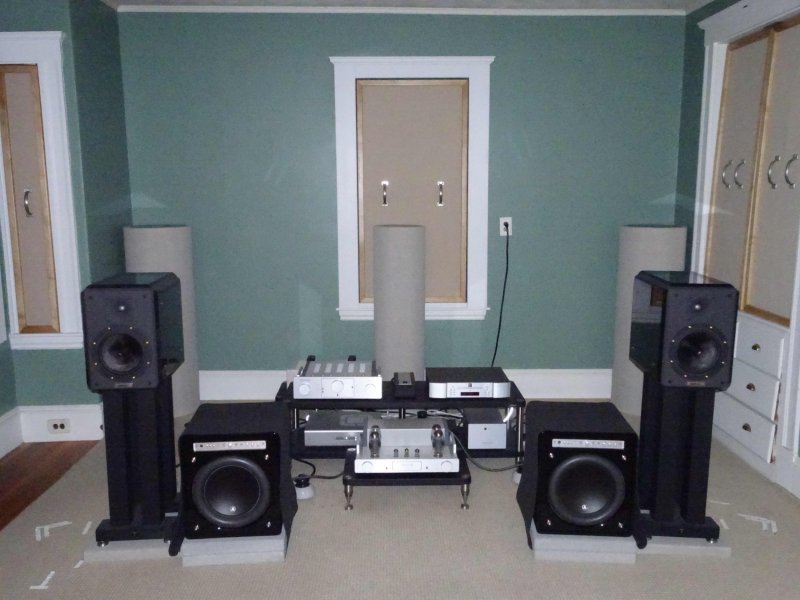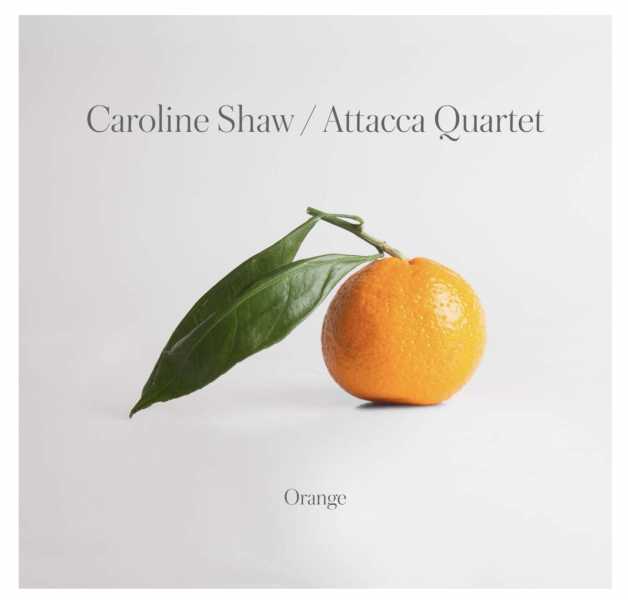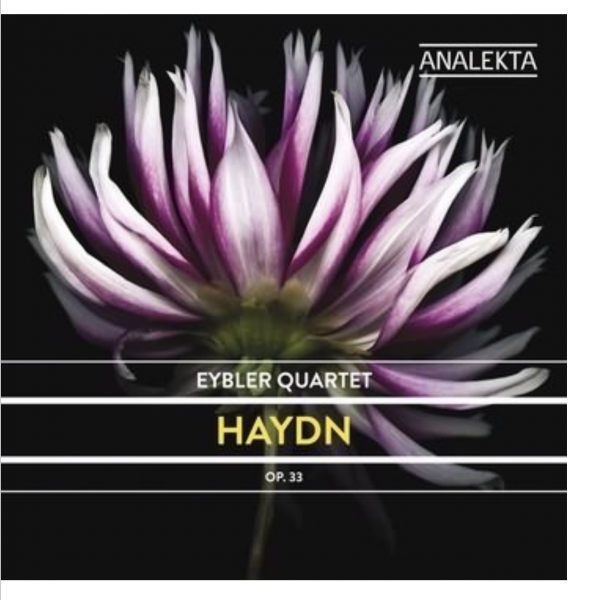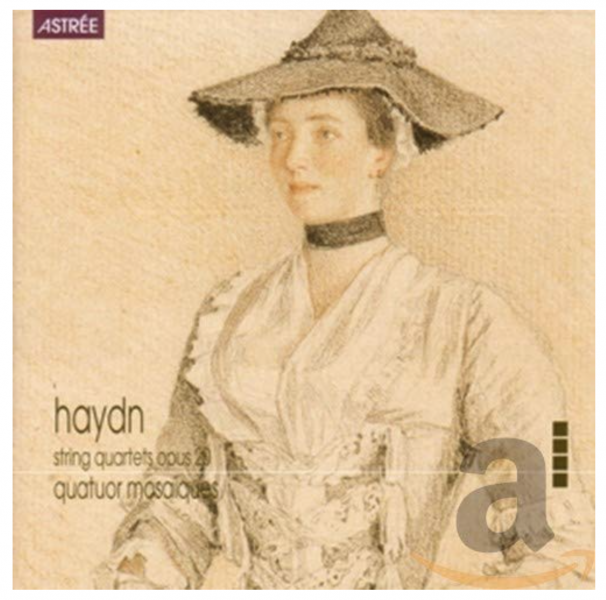Thinking about easy options to potentially lessen distortion, I decided to move the equipment rack further back, towards the front wall and away from the speakers. While a number of experts recommend separating the equipment rack from the speakers, I had hesitated to do so in the past, for two reasons:
1.The imaging changed in an undesired manner, with images moving back when the rack moved back. Yet that was when I still had a higher rack (my current one is the lowest one I could find for a reasonable price and without custom fabrication), the electronics were weaker with presumably less stable imaging, and above all, my acoustics were much inferior and less stable than they are now.
2. If I moved the rack back, it would put the equipment more into the direct firing line of the subwoofers at the front wall. Yet now that the subs were in front next to the speakers, the situation reversed completely. Moving the rack away from the speakers would also move it away from the subs.
The second reason is also why I agreed with Peter A. when, right after we had moved the subs next to the speakers, he suggested that we should move the equipment rack further back; we moved the rack by about 10 inches. Perhaps that move also was responsible for a good part of the improvement of sound that I experienced back then.
So I decided to move the rack back a bit more, as it turned out 5.5 inches. I planned and still plan to do moves in small increments, because I am not yet sure if moving the rack fully towards the front wall will be a good thing. After all, the subwoofers at the front wall in hindsight had messed up the sound, perhaps causing a weird turbulence in the backwave from the main speakers (but then, they were also positioned high on ASC SubTraps).
Voila, considerably less distortion! The sound on that period instrument string quartet right away moved from a "teeth grinding" affair to something more acceptable. Imaging seemed unaffected, as it should be.
Since the equipment on the rack apparently causes disturbing reflections, I thought about how I could lessen reflections further. My eye fell on the gloss paint of the JL Audio subwoofers, which had never been a favorite finish of mine, but strangely the only one available to order (I would have preferred matte). After toying with towel options, eventually I decided to buy rubber mats, also because of the convenient size:
https://www.amazon.com/Neoprene-Sponge-Rubber-Sheet-Rolls/dp/B07BKP6KFX/
The 15 inch width covers the 16 inch depth of the subwoofers nicely, and the 60 inch length allows for wrapping around the sidewalls of the subs as well, as you can see from below before and after images. I still haven't cut to size and taped on the covers yet, debating with myself if I should first put cloth between sub paint and rubber covers as protection, even though the rubber clearly does not appear to be of the sticky variety. Don't worry, the grey color of the covers is an artifact of the camera's flashlight; in reality the covers look much blacker, similar to my speaker stands and almost as black as the subwoofer paint.
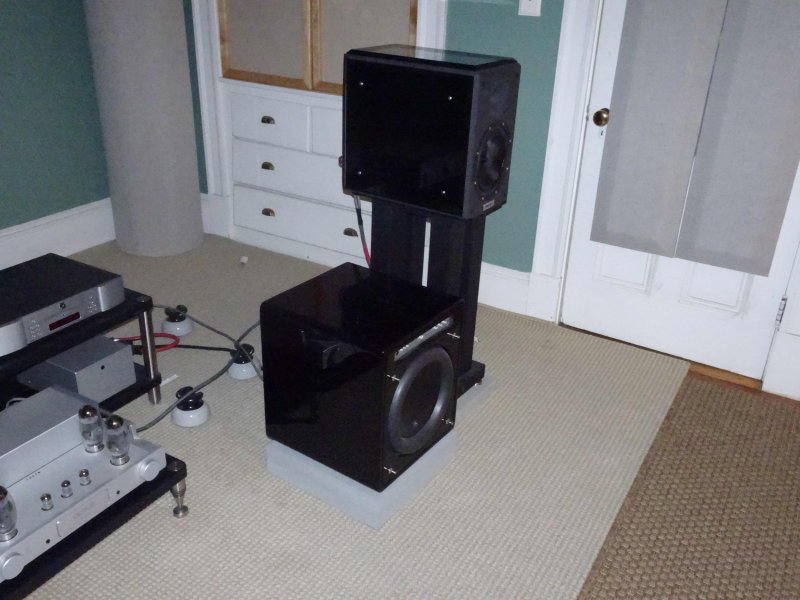
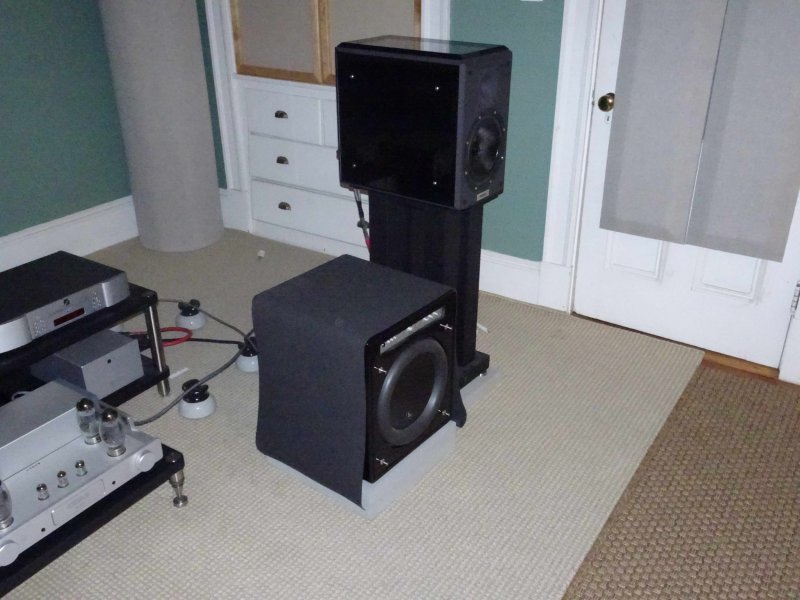
After putting the covers on, HF distortion is very much down! The effect is even more pronounced than moving the rack back. I could easily and repeatedly check the effect of the rubber covers over the reflective gloss paint of the subwoofers, because as of yet they can be readily removed and put back.
On the aforementioned first mvmt. of the Haydn quartet op.20/II in C major, played on period instruments featuring gut strings (producing intense overtones), the sound image of the first violin is more focused with the covers on, even though the image thankfully is still rather big and not pinpointed. In particular, the high frequencies appear more localized, less of an undefined, spread-out halo, and thus less beaming in an uncontrolled, irritating manner. When other instruments in higher register come in, the energy fields of overtones overlap less with the first violin, and thus the sound becomes less confusing to the ear. This also further reduces the impression of beaming from all the intense overtones and lessens irritation by the sound. Without the covers on it's just "too much", and with the covers on the subs the sound becomes digestible to the ears, and thus much less fatiguing. I am very confident that the described effects are highly reproducible and real, since with going back and forth, back and forth numerous times with covers on/off I learned how to hone in on what to listen for, and I could easily hear it every time, without having to doubt that I might be fooling myself.
With Lee Morgan's trumpet I could also hear a good effect from the subwoofer covers, but I am slightly less confident than with the violin on the Haydn quartet. Still, with rubber covers on, there is just more calm and less nervous irritability in the trumpet sound, especially in the high register, and it makes the instrument sound more real, more engaging and takes away fatigue. It also allows you to listen into the sound more, revealing more timbral detail.
***
Finally, I moved the rack backwards another ca. 5.5 inches (for the reason why I do these moves in such small increments, see above). The effect was less than the first move of 5.5 inches a few days earlier, but still noticeable. There was yet less HF distortion on the Haydn string quartet, and even the softer, drawn out sounds at the beginning of the third movement were different. There was more calm in the sound, with less nervous tension. I checked for reproducibility of the effect by moving the rack back and forth between old and new positions (I felt comfortable doing so even with the tubes in the preamp burning, since the sliding on the wool carpet hardly seemed to cause any vibrations). I also repeatedly checked if there was any movement of images in the soundstage, but everything stayed solid, as it should; upfront remained upfront, sounds further back in the soundstage remained locked in their position. As I mentioned, this would not have necessarily been the case in the past. With this last move the rack is now midway between front wall and speakers (drivers 7 feet from front wall).
Here is the configuration of my current set-up:
